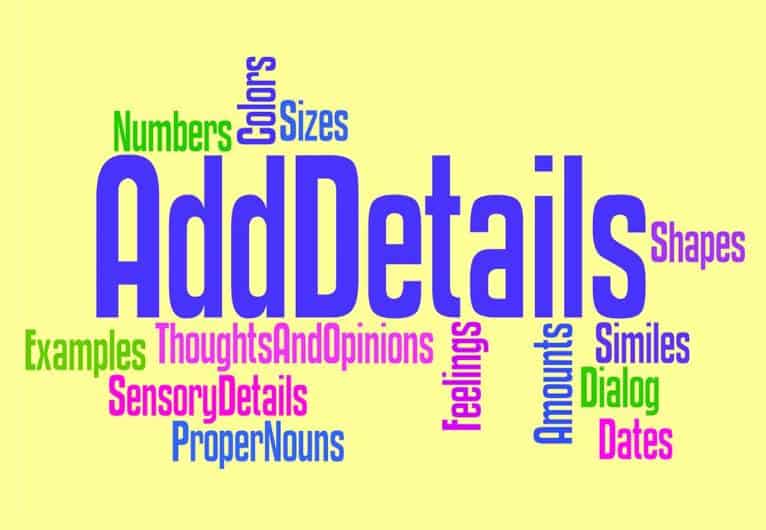I’m spending this week writing about writing:
Specifically, I plan on dispelling some of the myths and misconceptions about the witting process, in hopes of helping writers, teachers, and parents assist themselves, their students, and their children become more enthusiastic, more effective writers.
After all, most people in this world do not write. They don’t enjoy writing, avoid it at all costs, and don’t do it well. But if you can write well, you possess a super power. Beyond my actual career as an author and columnist, I cannot tell you how many times I’ve been leaned upon by supervisors and colleagues for my ability to write well.
Writing well will make you vastly more valuable in almost any career that you choose.
In addition to helping people become better writers, I also want to rant a little bit about things that annoy the hell out of me.
I don’t know if you’ve noticed, but I enjoy the occasional rant.
____________________________________________
One of the most common bits of advice that I hear teachers offer young writers is this:
“Add more details.”
But let me ask you this:
When in your life have you ever read anything and thought when you were finished:
“I wish that author had added more details.”
“Add more details” is the advice of teachers who want their young writers to write longer things, and the only way they can imagine something being longer is through adjectives.
This is terrible, useless, counterproductive advice. Yet it happens all the time.
I once heard a teacher say to a student, “Your character is sitting in the shade under a tree. What color is that tree?”
What color is that tree?
We all know the color of that tree. Unless you’re writing about fall in New England, you write “tree” and your reader sees green. Why add a detail that is already plainly inferred by the noun?
The same holds true for grown-up writers, too. No reader wants you to describe something when the description of that thing is already embedded in its name.
Grass is green. Knives are sharp. Skies are blue.
No need to expound on any of these things or waste words trying.
If this isn’t the case, sure. Go ahead and mention it. If that grass is burnt and brown, tell the reader. If the knife is dull and unthreatening, definitely indicate it. If the sky is an ominous gray, use that detail to enhance the mood of your story.
But if the grass is green, assume that the readers knows it, because they do.
So what should be said to young writers in lieu of “add more details?”
How about:
“I think you need a scene explaining your character’s motivations more clearly.”
“We need to know how your character got from A to B. You probably saw it in your mind, but now you need to put it into your reader’s mind.”
“Your ending doesn’t really do it for me. Let’s talk about ways that you might revise that final scene.”
“I think it would be great if your character encountered a few more struggles along the way before finally winning.”
“Can you pause the action here and let us know what your character is thinking with some internal dialogue?”
Or perhaps best of all:
“Great! You’ve written a rough draft, which is a wonderful accomplishment. Let’s put this aside for a couple weeks before we talk about it. Go start something new.”
All of these suggestions are far superior to “Add more details” because adding more details almost always makes the writing worse. Adding useless, wasteful words never helps. Telling the reader that trees are green and skies are blue does not make for better writing.
Malcolm Gladwell produces a podcast that I adore called Revisionist History. Every episode is eye opening, thought provoking, and norm challenging.
But every time Gladwell introduces a character in his podcast – scientist, politician, historian, athlete – he always indicates that person’s hair color. Somewhere along the way, Gladwell decided that the best way to give the reader a sense of what these people look like is by describing their hair.
He’s essentially adding more details, but these details do nothing for his stories but distract. It’s like listening to someone with an uncontrollable tic:
Introduce a character. State their profession. Describe their hair.
If Gladwell needs to describe these characters – and most of the time I don’t think he needs to describe them at all – at least tell the audience something interesting, amusing, or unique about the person, or perhaps tell them something that might have bearing on their research, opinions, or postulations.
Do the person have children? Where do they live? Where were they raised? Are they religious? Do they always have cat hair on their shirt? Do they prefer soda over coffee? Are they an easy laugh? Do they rarely smile? Are they also a marathoner? Do they drive a 1991 Honda Civic? Are they a fan of The Ramones?
If Gladwell feels the need to “Add more details,” don’t just add the same irrelevant, uninteresting, utterly forgettable detail every time.
Hair color says nothing about a person. The persistence of cat hair on their shirt or their undying love for their 30 year old Honda Civic is at least a little interesting and perhaps even a little illustrative at the same time.
Either way, it says more about a person than hair color.
As a writer, you must ask yourself what your reader wants, what your reader needs, and what does your reader already know. These questions will determine if you need to mention that grass is green and skies are blue.
As a teacher of writing, the best way to become better is to write. Engage in the process on a daily basis. Learn what it takes to connect sentences and paragraphs into solid prose.
Do the job so that you can understand the job.










